Feature | Key Questions on COVID-19 and Cardiovascular Disease
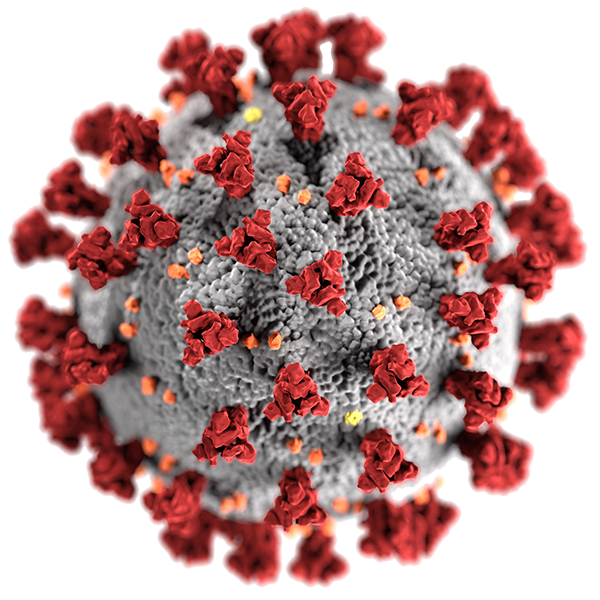
The following is a digest of ACC's clinical guidance on the cardiac implications of COVID-19.
Organized in an FAQ format for easy navigation, this guidance is summarized from more extensive documents approved by the ACC Science and Quality Committee and published on the ACC COVID-19 Hub or in the Journal of the American College of Cardiology.
This FAQ is intended to be topical, not comprehensive.
Quick Links:
- What is the role of troponin measurement in COVID-19?
- What is the role of BNP measurement in COVID-19?
- What is the role of RAAS inhibitors in COVID-19?
- What is the role of statin therapy in COVID-19?
- What are some considerations for echocardiography in COVID-19?
- What are some considerations around older adults with cardiovascular disease in COVID-19?
- What are the considerations for cardiomyopathy and heart failure in COVID-19?
- What are the QT-monitoring considerations for hydroxychloroquine and azithromycin use in COVID-19?
- How should patients with cardiovascular conditions manage workplace exposure to COVID-19?
- What are thrombosis risk and management considerations in COVID-19?
- How should AMI be managed during COVID-19?
- What is the link between hypertension and COVID-19?
- What is home-based cardiac rehabilitation and how could it be used during COVID-19?
- What telehealth strategies are available to address stress, anxiety, physical inactivity, suboptimal nutrition and ongoing tobacco use in patients with cardiovascular disease?
- How can remote patient monitoring help with cardiovascular prevention during COVID-19?
- What are the key considerations for managing AFib during COVID-19?
What is the role of troponin measurement in COVID-19?

Category: Biomarker Management
Patient Type: COVID+
Prevalence: COMMON
Principal Guidance: Troponin is commonly elevated in patients COVID-19 and does necessarily indicate myocardial infarction (MI) or other cardiac sequalae; routine monitoring of troponin is indicated upon clinical suspicion of MI or cardiac dysfunction.
Author: James L. Januzzi, Jr., MD, FACC
Source: Troponin and BNP Use in COVID-19
SQC Approval Date: March 18, 2020
Rise and/or fall of troponin – indicating myocardial injury – is common among patients with acute respiratory infections and correlates with disease severity.
Abnormal troponin values are common among those with COVID-19 infection particularly when a high sensitivity cardiac troponin (hs-cTn) assay is used. Detectable hs-cTn is observed in most patients with COVID-19 and significantly elevated in more than half of the patients who died.
The mechanisms underlying myocardial injury in those with COVID-19 infection are not fully understood, however in keeping with other severe respiratory illnesses, direct ("non-coronary") myocardial damage is almost certainly the most common cause.
Given the presence of abundant distribution of ACE2 – the binding site for the SARS-CoV-2 in cardiomyocytes – some have postulated that myocarditis might be a common cause.
Support for this comes from reports of COVID-19-related acute left ventricular failure. Other possibilities include acute MI – either Type 1 MI based on plaque rupture triggered by the infection or Type 2 MI based on supply-demand inequity.
Importantly, a rise and/or fall of troponin is insufficient to secure the diagnosis of acute MI; rather, it should be based on clinical judgment, symptoms and signs, and ECG changes.
Given the frequency and nonpecific nature of abnormal troponin results among patients with COVID-19 infection, clinicians are advised to only measure troponin if the diagnosis of acute MI is being considered on clinical grounds.
In addition, an abnormal troponin should not be considered evidence for an acute MI without corroborating evidence.
Use of echocardiography or coronary angiography for COVID-19 patients with myocardial injury or elevated troponin should be restricted to those in whom additional diagnostics would meaningfully affect clinical outcomes.
What is the role of BNP measurement in COVID-19?
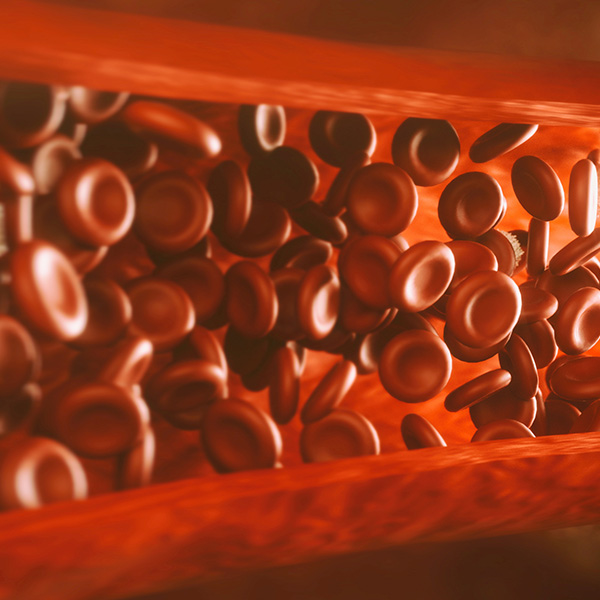
Category: Biomarker Management
Patient Type: COVID+
Prevalence: COMMON
Principal Guidance: BNP is commonly elevated in patients with COVID-19 and does not necessarily indicate new onset heart failure; evaluation and treatment for heart failure should only be initiated in COVID-19 patients with elevated BNP in the presence of confirmatory clinical evidence.
Author: James L. Januzzi Jr., MD, FACC
Source: Troponin and BNP Use in COVID-19
SQC Approval Date: March 18, 2020
Natriuretic peptides are biomarkers of myocardial stress and are frequently elevated among patients with severe respiratory illnesses, typically in the absence of elevated filling pressures or clinical heart failure.
Much like troponin, elevation of BNP or NT-proBNP is associated with an unfavorable course among patients with ARDS.
Patients with COVID-19 infection often demonstrate significant elevation of BNP or NT-proBNP levels. The significance of this finding is uncertain and should not trigger an evaluation or treatment for heart failure unless there is clear clinical evidence for the diagnosis.
Use of echocardiography or coronary angiography for COVID-19 patients with myocardial injury or elevated natriuretic peptides should be restricted to those in whom additional diagnostics would meaningfully affect clinical outcomes.
What is the role of RAAS inhibitors in COVID-19?

Category: CV Therapeutics
Patient Type: All
Prevalence: COMMON
Principal Guidance: ACC, AHA, HFSA and ESC all strongly recommend continuation of ACE/ARB/ARNIs in accordance with current clinical guidelines regardless of COVID status unless clinically warranted (i.e,. hemodynamic management in acute care context).
Author: ACC, AHA, HFSA Joint Statement; Update: Eugene Yang, MD, FACC; Anandita Agarwala, MD; Lisa Martin, MD, FACC; Arjun Kanwal, MD; Eileen Handberg, PhD, FACC
Source: HFSA/ACC/AHA Statement Addresses Concerns Re: Using RAAS Antagonists in COVID-19
SQC Approval Date: March 17, 2020; Update May 11, 2020
Currently there are no experimental or clinical data demonstrating beneficial or adverse outcomes with background use of ACE inhibitors, ARBs or other RAAS antagonists in COVID-19 or among COVID-19 patients with a history of cardiovascular disease treated with such agents.
The HFSA, ACC, and AHA recommend continuation of RAAS antagonists for those patients who are currently prescribed such agents for indications for which these agents are known to be beneficial, such as heart failure, hypertension, or ischemic heart disease.
In the event patients with cardiovascular disease are diagnosed with COVID-19, individualized treatment decisions should be made according to each patient's hemodynamic status and clinical presentation.
Therefore, be advised not to add or remove any RAAS-related treatments, beyond actions based on standard clinical practice.
Additional details supporting the ACC, AHA, HFSA Joint Statement:
- The renin-angiotensin-aldosterone system (RAAS) plays a key role in the pathophysiology of hypertension, heart failure and kidney disease.
- SARS-CoV-2, the virus that causes COVID-19, appears to infect human cells via the ACE-2 (angiotensin converting enzyme 2) receptor.
- ACE-2 plays a key role in the regulation of the RAAS and mediates the breakdown of angiotensin I and II to inactivated proteins (angiotensin 1-9 and angiotensin 1-7, respectively).
- Pharmacologic RAAS inhibition with ACE inhibitors or angiotensin receptor blockers (ARBs) may increase ACE-2 levels and thus raise theoretical safety concerns in treated COVID-19 patients, available here.
- No studies to date have prospectively evaluated the impact of RAAS inhibition in COVID-19 patients.
- While there is inconsistent data on clinical outcomes with RAAS inhibition among hospitalized COVID-19 patients, some recent studies suggest a protective effect with lower morbidity and mortality rates, available here.
- Several clinical trials are underway to evaluate the effect of RAAS modulation (recombinant ACE-2 and losartan) on outcomes in COVID-19 patients.
- Until more data are available, RAAS inhibitors should be continued in clinically stable COVID-19 patients and follow recommendations published by the American College of Cardiology, American Heart Association, and the Heart Failure Society of America and the European Society of Cardiology Council on Hypertension.
What is the role of statin therapy in COVID-19?
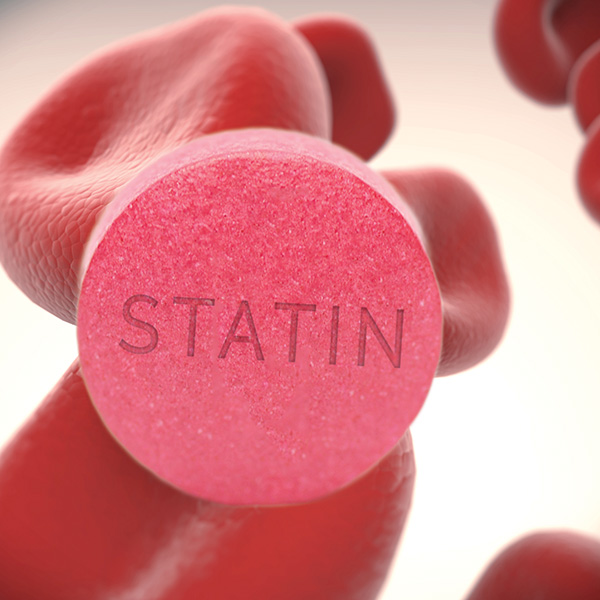
Category: CV Therapeutics
Patient Type: All
Prevalence: COMMON
Principal Guidance: Guideline-directed statin therapy is critical in the context of COVID-19 given the high mortality amongst patients with preexisting cardiometabolic disease; limited evidence suggests statin therapy may mitigate cardiovascular events among patients with viral infections, but is insufficient to warrant COVID-specific prescribing.
Author: Salim Virani, MD, FACC
Source: Is there a role for statin therapy in acute viral infection?
SQC Approval Date: March 18, 2020
Guideline-directed statin therapy in patients with clinical ASCVD, diabetes, or those at moderate-to-high risk remains critical in the COVID-19 context given the extremely high case fatality rate for patients with cardiovascular disease (10.8%) and diabetes (7.3%).
Some observational studies also suggest that statin therapy is associated with a reduction in various cardiovascular outcomes (and potentially mortality) among hospitalized patients with influenza and/or pneumonia.
One randomized trial suggested possible beneficial effects of initiating oral statin therapy for intubated pneumonia cases; another trial did not find benefit.
Nonetheless, these findings have been used to hypothesize a potentially beneficial effect of statins for patients with MERS-COV (and other beta coronaviruses like SARS-CoV-2). Currently no randomized or observational evidence to supports these conjectures.
Importantly, however, statins do not appear to be harmful in this setting.
What are some considerations for echocardiography in COVID-19?

Category: IMAGING
Patient Type: COVID+
Prevalence: COMMON
Principal Guidance: Point-of-care ultrasound, with ultrasound enhancing agent as required, is the preferred frontline imaging modality for COVID+ patients because it provides clinically meaningful information, serves as effective triage for more advanced imaging, and minimizes staff exposure.
Author: James Kirkpatrick, MD, FACC, FASE (Chair); Carol Mitchell, PhD, FASE; Cynthia Taub, MD, FASE; Smadar Kort, MD, FACC, FASE; Judy Hung, MD, FACC, FASE; Madhav Swaminathan, MD, FASE
Source: ASE Statement on Protection of Patients and Echocardiography Service Providers During the 2019 Novel Coronavirus Outbreak
SQC Approval Date: March 18, 2020
Echocardiography is an essential imaging modality to assess cardiac complications of viral infection as well as manage COVID+ patients with underlying cardiovascular disease.
However, in the context of infectious disease, modifications of standard procedure may be warranted.
- Point-of-care ultrasound (POCUS) may be advisable for COVID+ patients because it allows in-room patient evaluation while minimizing staff exposure.
When possible, pre-plan procedures, including the use of ultrasound enhancing agent (UEA), to rapidly acquire the most relevant sequence of images. UEA have been proved safe and effective in ICU patients.
Archiving and transmitting images to experienced echocardiographers may obviate the need for additional echoes and/or accurately guide the clinical need for advanced imaging (e.g., wall motion, quantitative valvular assessment, etc.). - Contrast enhanced computed tomography and MR should be considered as alternatives to aerosol-inducing TEE for exclusion of left atrial appendage thrombus prior to cardioversion.
- Consider deferring stress echoes or utilizing an alternative modality given the additional transmission risk associated with deep breathing and potential cough.
- As with all procedures, special attention should be given to matching PPE with risk and rigorously cleaning and disinfecting equipment between patients.
What are some considerations around older adults with cardiovascular disease in COVID-19?
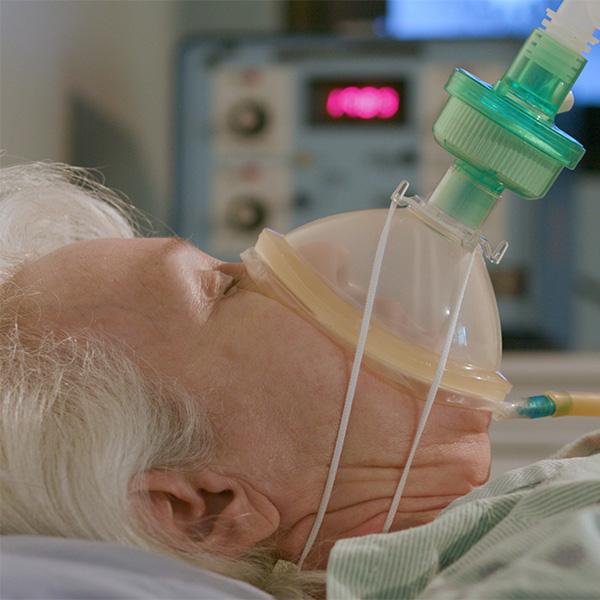
Category: RESOURCE MANAGEMENT
Patient Type: COVID+ CV, COVID- CV
Prevalence: COMMON
Principal Guidance: Older adults with cardiovascular disease are at risk for both severe presentation of COVID-19, and lack of adequate cardiovascular disease monitoring during the pandemic. Cardiologists can consider these practical management strategies to facilitate care.
Author: Nicole M. Orr, MD, FACC, and select members of the ACC Geriatric Member Section
Source: Strategies For Risk Reduction and Management of Older Adults With Cardiovascular Disease During the COVID- 19 Pandemic
SQC Approval Date: April 24, 2020
Many older adults fearful of COVID-19 are strictly adherent to social isolation measures and may be avoiding routine medical care. Continued management of cardiac disease during the pandemic is essential as optimization of cardiovascular health may not only decrease the risk of a cardiac admission but potentially mitigate vulnerability if exposed to SARS-CoV-2.
Patients should be contacted to avoid canceling appointments and encouraged to reschedule via telehealth encounters when feasible. Older adults may have difficulty navigating audio-visual technology, so patients and families should be encouraged to familiarize themselves with a video platform to which they have access and feel comfortable using.
Telephone visits should be maintained and will be reimbursed if patients cannot or do not wish to use video technology.
Encounters with noninfected older adults during the pandemic should focus on disease prevention and COVID-19 preparation.
- Safeguarding measures should be reiterated at every opportunity, and clinicians should utilize the teach-back method to ensure understanding.
- Direct encounters with high-risk older adults should be proactively avoided by clinicians if they have recent significant COVID exposure despite lack of symptoms.
- All relevant guideline-directed medication therapy should be continued in the absence of contraindications; it is reasonable to consider initiating statin therapy according to ACC guidelines.
- The importance of maintaining nutrition, hydration and daily exercise despite social isolation measures should be emphasized.
- Older adults should be instructed to identify a healthy, low risk, trusted point-of-contact with whom physicians can maintain communication.
- All older adults should be strongly encouraged to prepare advance directives and clarify religious preferences prior to potential SARS-CoV-2 infection in order to make treatment decisions at the time of potential illness concordant with their goals.
COVID-19 disease management in older adults should be individualized as older adults are heterogeneous with respect to health status and resiliency; chronologic age alone should not determine management strategy.
- Pharmacologic management for eligible older adults should follow guidelines outlined by the CDC. In particular, the efficacy of hydroxychloroquine and chloroquine remain unproven and optimally should be administered within clinical research protocols and monitored carefully given the increased QT prolongation risk.
- Patients should be informed that hospitalization and recovery will be challenging given isolation requirements.
- Patients should be instructed to identify a caregiver to assist in recovery if sent home, and prepare means to maintain social connections (e.g., FaceTime, family chat rooms, etc.) to help ease the emotionally challenging experience of isolated recovery in a skilled nursing facility.
- Finally, older adults should be encouraged to participate in clinical trials pertaining to COVID-19 management if feasible.
What are the QT-monitoring considerations for hydroxychloroquine and azithromycin use in COVID-19?
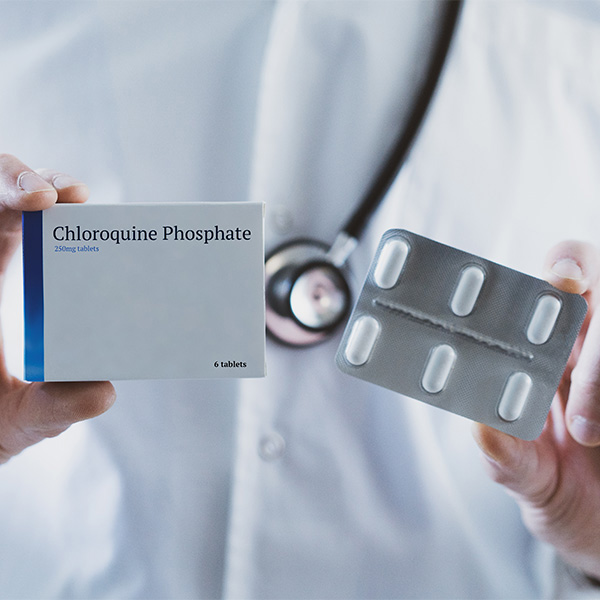
Category: Experimental COVID Therapeutics
Patient Type: COVID+
Prevalence: COMMON
Principal Guidance: QT-prolonging medications, including those used for COVID, require assessment and management of ventricular arrhythmia risk. Until clinical trial guidance is available, a standard approach that has been modified for pandemic exigencies is outlined.
Principal Author: Timothy F. Simpson, MD, PharmD; Richard J. Kovacs, MD, MACC; Eric C. Stecker MD, FACC
Source: Ventricular Arrhythmia Risk Due to Hydroxychloroquine-Azithromycin Treatment For COVID-19
SQC Approval Date: March 29, 2020
In vitro and preliminary clinical research has suggested that hydroxychloroquine alone and in combination with azithromycin could be an effective treatment for COVID-19.
Although clinical evidence remains nascent, clinicians in many countries have begun using these medications.
However, chloroquine, hydroxychloroquine and azithromycin all prolong the QT interval, raising concerns about the risk of arrhythmic death from individual or concurrent use of these medications.
We strongly encourage enrollment of patients in clinical research protocols, whenever available.
All clinical use that occurs outside of a research setting should incorporate anticipated benefits balanced against risks. As additional research results become available, recommendations for QT monitoring may escalate or de-escalate.
How should patients with cardiovascular conditions manage workplace exposure to COVID-19?

Category: CV THERAPEUTICS
Patient Type: COVID- CV
Prevalence: COMMON
Principal Guidance: Clinicians should counsel patients with preexisting cardiovascular conditions to take extra precautions, including in the workplace, to minimize exposure risk to COVID-19.
Author: Joseph Marine, MD, FACC; Daniel M. Philbin, Jr., MD, FACC; Kim A. Eagle, MD, MACC; and Thomas M. Maddox, MD, MSc, FACC
Source: Standalone
SQC Approval Date: April 24, 2020
Patients with cardiovascular conditions, especially poorly controlled disease, are at higher risk for COVID-19 complications. As such, they should be counseled to avoid situations that would put them at risk for SARS CoV2 exposure.
They, along with their physician, should evaluate their workplace and determine if undue risk exists. If so, mitigation strategies should be considered.
These include minimizing face-to-face contact between employees, assigning work tasks that allow the patient to maintain six-foot distance from other workers, customers and visitors, or to telework if possible.
For patients who work in health care settings, avoidance of direct COVID-19 patient exposure should be attempted.
In addition, they should be assured of adequate personal protective equipment appropriate to their work environment. Please refer to the CDC recommendations regarding workplace accommodations, found here.
What are thrombosis risk and management considerations in COVID-19?

Category: COVID THERAPEUTICS
Patient Type: COVID+
Prevalence: MODERATELY COMMON
Principal Guidance: The apparent increased thrombotic risk in COVID-19 patients is sufficient to recommend pharmacological VTE prophylaxis in all hospitalized patients unless contraindicated; D-dimer levels may be valuable for clinical monitoring, but there is currently no evidence supporting its use to guide anticoagulation intensity beyond clinical judgment; post-discharge VTE prophylaxis with a DOAC should be considered.
Author: Geoffrey D. Barnes, MD, MSc, FACC; Adam Cuker, MD, MS; Ty J. Gluckman, MD, FACC; Gregory Piazza MD, MS, FACC; Deborah M. Siegal MD, MSc
Source: Thrombosis and COVID-19: FAQs for Current Practice
SQC Approval Date: April 22, 2020
Despite the limited published evidence, most experts agree that the signal for increased thrombotic risk is sufficient to recommend pharmacologic venous thromboembolism (VTE) prophylaxis in all hospitalized COVID-19 patients as long as there is no contraindication.
When clinically appropriate, once daily low-molecular weight heparin may help minimize staff exposure risk and conserve personal protective equipment (PPE).
The coagulopathy found in severe COVID-19 appears to be associated with normal or increased fibrinogen levels, unlike disseminated intravascular coagulopathy (DIC), and thus does not present a clear increased risk for bleeding.
High D-dimer levels appear to predict a poor prognosis in COVID-19 patients, although the relationship between elevated D-dimer levels and mortality has been shown in previous cohorts of critically ill patients.
Therapeutic anticoagulation is not mandatory for all patients based only on an elevated D-dimer test and there is no evidence supporting use of D-dimer values to guide intensity of anticoagulation.
However, D-dimer values may be helpful for clinical monitoring, characterizing the coagulopathy, and conducting clinical trials to rigorously test management strategies.
Use of higher-intensity, non-standard VTE prophylaxis can be considered for patients with COVID-19, but ideally should be done within the context of a clinical trial given current lack of efficacy evidence.
Assessment for VTE should incorporate multiple elements of the patient condition, including interval history, physical exam and vital signs, currently administered treatments, and laboratory studies.
The decision to order imaging for VTE should not be based on an elevated D-dimer alone. Targeted imaging to confirm suspected VTE and guide therapeutic anticoagulation is preferred if it can be performed with acceptable exposure risk.
Post-hospital VTE prophylaxis should be considered in patients with COVID-19 given the long duration of the illness and the increased likelihood of immobility and superinfection.
Experience from several studies suggests that in select patients without COVID-19, post-discharge thromboprophylaxis (particularly with a DOAC) may be beneficial if bleeding risk can be minimized.
Use of a validated risk score (e.g., IMPROVE or IMPROVEDD score with D-dimer) may be particularly helpful in guiding decision-making.
How should AMI be managed during COVID-19?

Category: CV THERAPEUTICS
Patient Type: ALL
Prevalence: MODERATELY COMMON
Principal Guidance: All attempts should be made to maintain the current AMI standard of care; additional evaluation may be warranted to accurately assess COVID status and MI etiology to better manage exposure risk and guide appropriate treatment.
Author: Consensus statement of SCAI, ACC, and ACEP
Source: Management of Acute Myocardial Infarction During the COVID-19 Pandemic
SQC Approval Date: April 20, 2020
Cardiovascular manifestations in the COVID-19 patient are complex: patients may present with acute myocardial infarction (AMI), myocarditis simulating a STEMI presentation, stress cardiomyopathy, nonischemic cardiomyopathy, coronary spasm, or myocardial injury without a documented Type I or Type II AMI, requiring careful diagnostic differentiation to maximize therapeutic effectiveness and minimize unnecessary medical staff exposure risk.
Nonetheless, most AMI cases in the U.S. remain COVID- and should be managed for expedient revascularization according to standard PCI protocols.
Fibrinolysis-based reperfusion strategy may be appropriate in non-PCI capable hospitals, especially when timely transfer is not practical, or when otherwise clinically indicated.
- AMI standard-of-care during COVID-19: All efforts should be made to maintain the current AMI standard-of-care. Door-to-balloon times remain important and should continue to be measured, however additional time may be required for careful clinical differentiation of both COVID status and precise MI etiology to minimize exposure risk and ensure the appropriate therapeutic intervention.
AMI management protocols in the context of pandemic COVID-19 should be developed in advance, and include EMS, the ED, and the cardiac catheterization laboratory. Dedicated COVID-19 CCLs and PPE should be available in geographies with widespread community transmission. - Definite STEMI: Primary PCI within 90 minutes remains the standard-of-care in PCI capable hospitals regardless of COVID status. Additional exposure precautions are mandatory in probable and confirmed COVID-19 patients, but may be considered for all cases given asymptomatic presentation and the potential for false-negative COVID test results.
- Possible STEMI: For patients who have an unclear, or equivocal, diagnosis of STEMI due to atypical symptoms, diffuse ST-segment elevation or atypical ECG findings, or a delayed presentation, additional noninvasive evaluation in the ED is recommended.
The focus of this evaluation is further risk stratification for COVID-19 status and further evaluation of the potential for coronary thrombotic occlusion versus other pathologies. - Futile prognosis: Not all COVID-19 patients with ST elevation with/without an acute coronary occlusion will benefit from any reperfusion strategy or advanced mechanical support.
In COVID-19 confirmed patients with severe pulmonary decompensation (adult respiratory distress syndrome) or pneumonia who are intubated in the ICU and felt to have an excessively high mortality, consideration for compassionate medical care may be appropriate. - Non-STEMI capable referral hospitals: Primary PCI remains the standard of care for patients transferred rapidly from non-PCI centers (within 120 minutes of first medical contact at Referral Hospital).
For patients in whom rapid reperfusion with primary PCI is not feasible, a pharmacoinvasive approach is recommended with initial fibrinolysis followed by consideration of transfer to a PCI center.
The COVID status of the individual patient, along with the COVID burden at both the referring and receiving hospital may require modifications to this standard. - Cardiogenic shock and/or out-of-hospital cardiac arrest: Patients with resuscitated out-of-hospital cardiac arrest (OHCA) and/or cardiogenic shock will continue to be the highest risk subgroup of AMI patients.
These patients will also be the highest risk for droplet-based spread of COVID-19. Patients with resuscitated OHCA should be selectively considered for CCL activation in the presence of persistent ST-elevation on their electrocardiogram, and a concomitant wall motion abnormality on echocardiographic evaluation. - Non-ST elevation AMI: Standard of care to both COVID positive and negative patients. COVID-19 positive or probable patients with an NSTEMI presentation should be managed medically and only taken for urgent coronary angiography and possible PCI in the presence of high-risk clinical features (Global Registry of Acute Coronary Events [GRACE] score >140) or hemodynamic instability.
What are the considerations for cardiomyopathy and heart failure in COVID-19?

Category: COVID THERAPEUTICS
Patient Type: COVID+
Prevalence: MODERATELY COMMON
Principal Guidance: Cardiac dysfunction is moderately common among hospitalized patients with COVID-19 and confers a worse prognosis; focused imaging and other cardiac diagnostics are warranted to guide differential management, but must be balanced against exposure risk; clinical management remains supportive although experimental strategies are being evaluated.
Author: Joel D. Schilling, MD, PhD; Ashwin K. Ravichandran, MD, FACC; Stacy A. Mandras, MD, FACC
Source: Management of the Hospitalized COVID-19 Patient with Acute Cardiomyopathy or Heart Failure
SQC Approval Date: April 16, 2020
Cardiovascular involvement is common in patients with severe COVID-19 disease and is associated with a worse prognosis. Those with underlying cardiovascular disease are particularly susceptible to cardiovascular complications and mortality with COVID-19, thus reinforcing the importance of continuing guideline-directed medication therapy in hemodynamically stable ambulatory patients without contraindications.
In severe COVID-19 cases, cardiomyopathy may result from SARS-CoV-2-induced myocarditis, profound systemic inflammation, and/or microvascular dysfunction.
There is currently very little data to guide the optimal management of patients with COVID-19 disease who develop cardiomyopathy or mixed/cardiogenic shock.
Cardiac imaging may be useful, but only when testing is likely to result in differential management and exposure risk can be adequately mitigated.
- In patients hospitalized with COVID-19 cardiac biomarkers should be checked on admission and in follow-up approximately 24-48 hours later.
- Myocarditis or inflammatory cardiac dysfunction should be considered in patients with COVID-19 who have elevated cardiac biomarkers and worsening hemodynamics or arrhythmias.
- ECG should be employed to screen for evidence of ST-T wave changes.
- Maintain a low threshold for POCUS in patients with the above clinical features.
- If evidence of cardiac dysfunction, consider select view for transthoracic echocardiography (TTE) to define LV/RV size and function, wall motion abnormalities, and/or pericardial effusion.
- Stable patients with suspected cardiovascular involvement should continue on guideline-directed medical therapy for heart failure.
- In patients with refractory shock, consider pulmonary artery catheters to help guide the use of inotropes, vasopressors or mechanical support.
- Endomyocardial biopsy may have a role in select patients being considered for clinical trials of anti-inflammatory therapy.
The mainstay of managing patients with severe COVID-19 disease who have cardiac involvement is supportive care.
There is currently no evidence to direct the management of these patients differently than any other inflammatory or "mixed" shock state.
Experimental strategies including antiviral, anti-inflammatory, convalescent sera are being considered as part of research protocols or compassionate use for COVID-19 infection with or without cardiac involvement.
What is the link between hypertension and COVID-19?

Category: Epidemiology and Risk
Patient Type: ALL
Prevalence: COMMON
Principal Guidance: Although a causal relationship has not been established, early epidemiological evidence suggests a correlation between hypertension and COVID-19 susceptibility and severity; hypertension should continue to be treated according to ACC/AHA guidelines.
Author: Eugene Yang, MD, FACC; Anandita Agarwala, MD; Lisa Martin, MD, FACC; Arjun Kanwal, MD; Eileen Handberg, PhD, FACC
SQC Approval Date: May 11, 2020
- Initial reports from "hot spots" like Wuhan, New York City, and the Lombardy region of Italy found high rates of hypertension among hospitalized COVID-19 patients.
- In a recent report, 56% of hospitalized COVID-19 patients in a large New York health care system presented with a diagnosis of hypertension, available here.
- In case series, patients with hypertension and COVID-19 infection have higher rates of morbidity and mortality.
- Many hospitalized COVID-19 patients are older with multiple comorbidities; there is no clear evidence of a causal link between hypertension and COVID-19-related morbidity and mortality.
- Hypertension remains the greatest modifiable risk factor for atherosclerotic cardiovascular disease.
- Clinicians should continue to follow the 2017 ACC/AHA blood pressure management guidelines to reduce long-term cardiovascular risk associated with hypertension, available here.
What is home-based cardiac rehabilitation and how could it be used during COVID-19?

Category: CV Therapeutics
Patient Type: COVID- CV
Prevalence: COMMON
Principal Guidance: Home-based cardiac rehab has demonstrated comparable benefits to traditional hospital-based programs and may serve as a viable alternative during COVID-19; reimbursement, unfortunately, remains limited.
Author: Ty J. Gluckman, MD, FACC; Pam R. Taub, MD, FACC, FASPC
Source: Continuity of Care and Outpatient Management for Patients with and at High Risk for Cardiovascular Disease during the COVID-19 Pandemic: A Scientific Statement from the American Society for Preventive Cardiology
SQC Approval Date: May 11, 2020
- Cardiac rehabilitation (CR) has traditionally been delivered in hospitals or outpatient clinics; COVID-19 has largely shut down such services to reduce transmission risk.
- Even prior to COVID-19, CR was grossly underutilized, with only 20% of eligible patients participating despite being a Class I guideline recommendation.
- Home-based cardiac rehabilitation (HBCR) may serve as a viable alternative during the COVID-19 pandemic; studies demonstrate HBCR to be beneficial in terms of exercise capacity and modifiable cardiovascular risk factor improvement, including blood pressure and LDL-C control.
- A recent AACVPR/AHA/ACC Scientific Statement on HBCR concluded that HBCR may be a reasonable option for clinically stable, low-to-moderate risk patients unable to attend conventional cardiac rehab, available here.
- The AACVPR has identified a number of viable options for HBCR, ranging from standalone apps to device-integrated programs that can monitor blood pressure, ECG and other physiological data, available here.
- For those at higher risk, a hybrid model which leverages the complementary aspects of both clinic-based CR and HBCR may be most desirable.
- Limited reimbursement represents an ongoing challenge; at present, HBCR is not a covered service under expanded Centers for Medicare and Medicaid Services telehealth rules.
What telehealth strategies are available to address stress, anxiety, physical inactivity, suboptimal nutrition and ongoing tobacco use in patients with cardiovascular disease?

Category: CV Therapeutics
Patient Type: COVID- CV
Prevalence: MODERATELY COMMON
Principal Guidance: COVID-19 is negatively influencing the mental health and healthy lifestyle choices of at least some patients with cardiovascular disease; both formal telehealth visits and emerging mobile health technologies may be considered to support healthy behavior during the pandemic.
Author: Ty J. Gluckman, MD, FACC; Pam R. Taub, MD, FACC, FASPC
Source: Continuity of Care and Outpatient Management for Patients with and at High Risk for Cardiovascular Disease during the COVID-19 Pandemic: A Scientific Statement from the American Society for Preventive Cardiology
SQC Approval Date: May 11, 2020
- Fear and anxiety about COVID-19 can be overwhelming for some, engendering poor sleep habits, overeating, unhealthy food choices, weight gain, and increased use of alcohol, tobacco or other drugs.
- An increasing number of mobile health (mHealth) options exist to assist patients in achieving healthful behaviors and lifestyle, both in primary and secondary prevention of heart disease, available here.
- Formal telehealth, however, should not be forgotten. Codes are currently available for medical nutrition therapy (97802, 97903, 97804), behavioral counseling for obesity (G0447 [HCPCS code]), intensive behavior therapy for cardiovascular disease (G0446 [HCPCS code]), and smoking and tobacco cessation counseling (99406, 99407).
- Referral to psychiatric services should be considered for patients with a potential mental health crisis or mental health diagnosis.
How can remote patient monitoring help with cardiovascular prevention during COVID-19?

Category: CV Therapeutics, Resource Management
Patient Type: COVID+ CV
Prevalence: MODERATELY COMMON
Principal Guidance: Remote monitoring technologies provide reasonable alternatives to in-person visits during COVID-19; with proper documentation and coding, reimbursement is available.
Author: Ty J. Gluckman, MD, FACC; Pam R. Taub, MD, FACC, FASPC
Source: Continuity of Care and Outpatient Management for Patients with and at High Risk for Cardiovascular Disease during the COVID-19 Pandemic: A Scientific Statement from the American Society for Preventive Cardiology
SQC Approval Date: May 11, 2020
- In late 2018, the Centers for Medicare and Medicaid Services announced the need to overhaul how Medicare pays for home health by improving access to solutions via remote patient monitoring technology, available here.
- While most cardiovascular clinicians are use to remote monitoring for patients with cardiovascular implantable electronic devices (e.g., pacemakers, ICDs), different RPM codes are likely to be helpful in cardiovascular prevention (99453, 99454, 99457 and 99458).
- 99453—Remote monitoring of physiologic parameters, such as weight, blood pressure, etc. This is the code for initial set-up and patient education related to the monitoring equipment.
- 99454—Device supply with daily recording or programmed alert transmission every 30 days. This is the code for collection, transmission and report/summary to the clinician managing the patient.
- 99457—Remote physiologic monitoring with >20 minutes of clinical staff/physician/other qualified health care professional time spent in interactive communication with the patient/caregiver during the month. This is the code for interpretation of the received data and interaction with the patient to arrive at a treatment plan.
- 99458—Additional 20 minutes of add-on time to 99457.
- Importantly, these codes require that 1) patient consent be obtained in advance of the service with documentation of this in the patient's record and 2) billing is limited to one time in a 30-day period.
What are the key considerations for managing AFib during COVID-19?
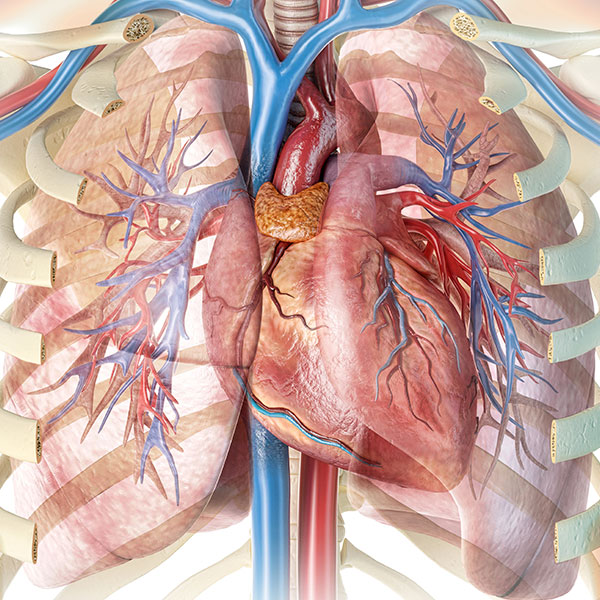
Category: CV Therapeutics, Biomarker Management, Resource Management
Patient Type: COVID+ CV, COVID- CV
Prevalence: MODERATELY COMMON
Principal Guidance: While there is no evidence of a direct association between COVID-19 and new-onset atrial fibrillation (AFib), serious viral illness is known to precipitate arrhythmia; particular caution should be taken to manage drug-drug interactions between commonly used COVID therapies and antiarrhythmics and anticoagulants.
Author: Bharath Rajagopalan, MD, FACC; Rachel Lampert, MD, FACC; Dhanunjaya Lakkireddy, MD, FACC
SQC Approval Date: May 11, 2020
- Do COVID-19 patients have a higher risk of developing AFib?
There is no evidence for any direct association between COVID-19 and new-onset AFib. However, as in any serious illness, there can be multiple factors including hypoxia and catecholamine overload which can result in episodes of AFib in patients who have a predisposition for AFib. Some patients with COVID-19 develop myocarditis which can also cause AFib.
- Does treatment for COVID-19 affect the use of antiarrhythmic medications for AFib?
Drugs like chloroquine, hydroxychloroquine, azithromycin, lopinavir and ritonavir used in the management of COVID-19 can prolong the QT interval, available here. The effect of remdesivir on the QT interval is unknown. AFib patients on antiarrhythmic agents like dofetilide, sotalol, amiodarone and dronedarone need careful monitoring of the QT interval. When there is significant QT prolongation and COVID treatment is warranted, stopping antiarrhythmic medication is reasonable if clinical circumstances allow. Lopinavir-ritonavir combination increases serum amiodarone (U.S. Food and Drug Administration labeling recommends caution and monitoring of serum amiodarone levels), digoxin and flecainide levels. Similarly, chloroquine and hydroxychloroquine can increase serum amiodarone, digoxin and flecainide levels to a lesser extent. Sotalol and dofetilide may need dosing adjustments in COVID-19 patients with acute kidney injury, available here. - Does treatment for COVID-19 affect anticoagulation for AFib?
Lopinavir-ritonavir combination (combined P-glycoprotein/strong CYP3A4 inhibitor) can potentially reduce warfarin levels and increase apixaban, rivaroxaban and edoxaban levels. FDA labelling suggests reducing apixaban dose to 2.5 mg twice daily if used concomitantly with lopinavir-ritonavir combination. Consider switching to alternate agents (preferably heparin or enoxaparin). Chloroquine and hydroxychloroquine can increase serum apixaban, dabigatran, rivaroxaban and edoxaban levels. Close clinical monitoring is required. Apixaban, dabigatran, edoxaban and rivaroxaban may need dosing adjustment in COVID-19 patients with acute kidney injury, available here. - How do you treat AFib in COVID-19 positive patients?
Where possible, a rate control strategy is preferable, especially in critically ill patients who can tolerate these medications. When anticoagulation is indicated, use of heparin or enoxaparin is preferable in patients where chloroquine, hydroxychloroquine, lopinavir/ritonavir use is anticipated. Antiarrhythmic drugs should be used with caution due to the risk of QT prolongation and drug-drug interactions with the above-mentioned agents. - Should my treatment approach for AFib change with the COVID-19 crisis?
The treatment approach for AFib should be tailored to the individual patient based on a multitude of factors including severity of symptoms, underlying comorbidities and prevalence of COVID-19 in the community. It would be best to avoid elective procedures for AFib if the procedure can be safely deferred to a later date. A recent guidance document published outlines triaging of these procedures in various clinical scenarios, available here. - What strategies can be used to manage patients with AFib who are unable to undergo cardioversion or ablation due to the COVID-19 crisis?
Rate control strategy should be maximized first, where possible. In patients with significant symptoms where no contraindications exist, antiarrhythmic agents such as flecainide and amiodarone can be instituted on an outpatient basis.
Clinical Topics: Acute Coronary Syndromes, Anticoagulation Management, Arrhythmias and Clinical EP, Cardiac Surgery, Congenital Heart Disease and Pediatric Cardiology, COVID-19 Hub, Diabetes and Cardiometabolic Disease, Dyslipidemia, Geriatric Cardiology, Heart Failure and Cardiomyopathies, Invasive Cardiovascular Angiography and Intervention, Noninvasive Imaging, Pericardial Disease, Prevention, Pulmonary Hypertension and Venous Thromboembolism, Sports and Exercise Cardiology, Stable Ischemic Heart Disease, Valvular Heart Disease, Vascular Medicine, Anticoagulation Management and ACS, Implantable Devices, SCD/Ventricular Arrhythmias, Atrial Fibrillation/Supraventricular Arrhythmias, Cardiac Surgery and Arrhythmias, Cardiac Surgery and CHD and Pediatrics, Cardiac Surgery and Heart Failure, Cardiac Surgery and SIHD, Cardiac Surgery and VHD, Congenital Heart Disease, CHD and Pediatrics and Arrhythmias, CHD and Pediatrics and Imaging, CHD and Pediatrics and Interventions, CHD and Pediatrics and Prevention, Acute Heart Failure, Pulmonary Hypertension, Interventions and ACS, Interventions and Imaging, Interventions and Structural Heart Disease, Interventions and Vascular Medicine, Angiography, Nuclear Imaging, Hypertension, Sleep Apnea, Sports and Exercise and Congenital Heart Disease and Pediatric Cardiology, Sports and Exercise and ECG and Stress Testing, Sports and Exercise and Imaging, Chronic Angina
Keywords: Acute Coronary Syndrome, Anticoagulants, Arrhythmias, Cardiac, Cardiac Surgical Procedures, Metabolic Syndrome, Angina, Stable, Heart Defects, Congenital, Dyslipidemias, Geriatrics, Heart Failure, Angiography, Diagnostic Imaging, Pericarditis, Secondary Prevention, Hypertension, Pulmonary, Sleep Apnea Syndromes, Sports, Angina, Stable, Exercise Test, Heart Valve Diseases, Aneurysm, COVID-19, Coronavirus, Coronavirus Infections, Cardiology Magazine, ACC Publications
< Back to Listings

